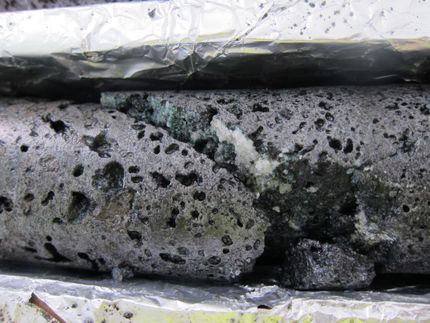More carbon dioxide leads to less clouds
A new feedback mechanism operating between vegetation and cloud formation could enhance the climate change
The warmer the air, the more water can evaporate: a simple relationship familiar to us from everyday life. Researchers from Germany and the Netherlands have now established that this is not always the case: although an increase in the greenhouse gas CO2 makes the climate warmer, it also allows less water to evaporate. Plants, with their billions of tiny leaf pores, are the cause of this apparent contradiction. They influence the gas and moisture content of the air around them. Using new calculations of an atmospheric model, the researchers found that this sets in motion a cascade of processes, finally resulting in global warming.

Presumably fewer clouds will develop in the future over the grass: The increase in carbon dioxide in the atmosphere causes an evaporation decrease of plants. As a result fewer cumulus clouds form, more sunlight reaches the ground - the climate change intensifies.
© Bart van Stratum
“We wanted to know how the foreseeable rise in CO2 would affect cloud formation in temperate climate zones and what part the vegetation plays in this,” says Jordi Vilà-Guerau de Arellano from the University of Wageningen in the Netherlands. Working with colleagues from the Max Planck Institutes for Chemistry and Meteorology, the geophysicists made use of, for the first time, a computer model that takes account of the soil, water cycle, atmosphere and growth processes of plants. The model results highlight how local and daily variable processes, through turbulence, can influence the atmosphere on larger scales.
The scientists simulated three scenarios for their analysis: a doubling of the CO2 in the atmosphere from the current 0.038% to 0.075%, an increase in the average global temperature by two degrees Celsius and a combination of both. The calculations represent the conditions expected for the year 2100 and compared to 2003 values based on scenarios from the Intergovernmental Panel on Climate Change (IPCC).
The researchers established that some land-vegetation-atmosphere exchange processes respond more strongly to increasing CO2 and climate change than others. Doubling the CO2 in the atmosphere actually starts a cascade of processes beginning with the physiological response of plants to the higher CO2 concentration. The trigger of the chain of events is that plants regulate the exchange of water vapor and carbon dioxide with the atmosphere by the opening and closing of the leaf pores - the stomata.
At higher CO2 concentrations plants close their stomata
The cascade starts harmless: in the double CO2 scenario, the stomata close earlier since the plants can assimilate the necessary CO2 for photosynthesis more optimally. As a result, less moisture is evaporated by the plants and there is overall less water vapour introduced into the atmosphere.
Consequently, fewer cumulus clouds are formed, which means that the Earth's surface becomes warmer, as the sun's rays hit it directly and are not reflected by clouds. Then, warmer air creates more turbulence in the atmosphere near the surface, and in consequence there is more heat and less moisture transported. The earth and the atmosphere thus heat up through the plants' response to the higher CO2 levels.
The researchers have thus found another feedback mechanism in the climate system, a self-reinforcing process. This feedback mechanism did not develop in the second scenario, in which the atmosphere only warms by two degrees Celsius without the effect of higher concentrations of the greenhouse gas CO2 on plants.
Evaporation will fall by 15%
The researchers then simulated a third scenario in which they increased both the CO2 levels and the temperature. “Positive effects on cloud formation include the ability of the warmer atmosphere to hold more water or increase the growth of biomass. However, they are only partly able to compensate for the reduction in cloud formation,” according to Jordi Vilà. “Evaporation will fall by 15%. The atmospheric boundary layer dries out, and fewer clouds form,” adds Jos Lelieveld, Director at the Max Planck Institute for Chemistry in Mainz.
The study thus shows that diminished evaporation from plants has a direct impact on cloud formation. Chiel van Heerwaarden from the Max Planck Institute for Meteorology emphasizes: “The calculations show an important feedback mechanism between the vegetation and physical climate processes.” In future, the researchers want to extend their analysis to the Amazon to test the effects of increasing CO2 levels on tropical regions.
Original publication
Jordi Vilà-Guerau de Arellano, Chiel C. van Heerwaarden und Jos Lelieveld; Modelled suppression of boundary-layer clouds by plants in a CO2-rich atmosphere; Nature Geoscience, 2. September 2012






























































